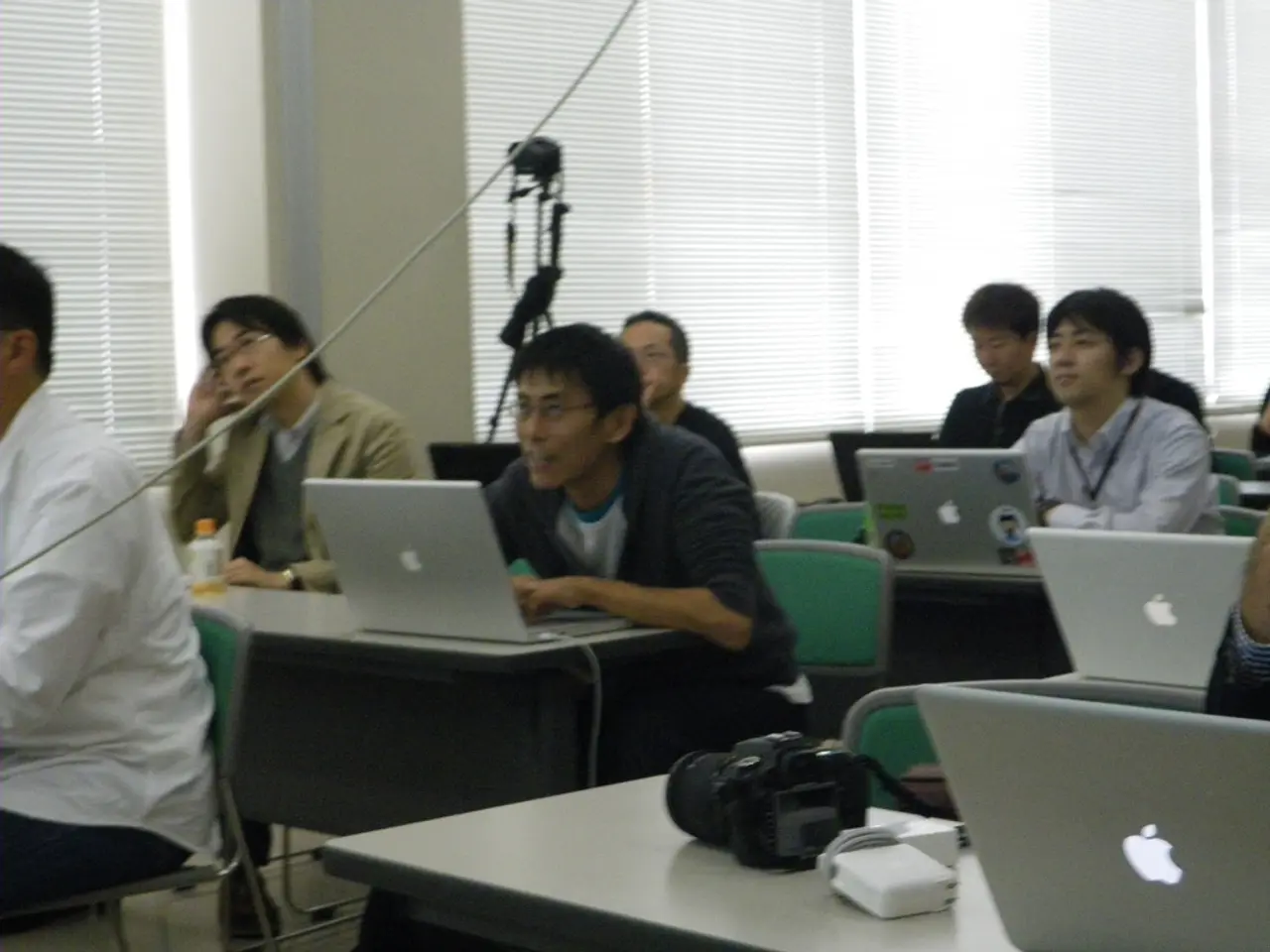Enhanced Learning through Augmented Reality (AR): Examining Its Impact
In the realm of modern technology, augmented reality (AR) has made a significant impact, particularly in the industrial sector. This innovative technology, which overlays digital information onto the physical world, has revolutionized operations and knowledge acquisition, offering numerous benefits over traditional methods.
A recent study on 68 students revealed that participants using AR systems retained adequate memory of procedural operations two weeks after completing their classes. This finding underscores the potential of AR in enhancing learning and knowledge retention.
AR's transformative power is evident in various key areas. Enhanced Training and Knowledge Transfer is one such area. Workers can now receive step-by-step, visual guidance directly overlaid on equipment through devices like smart glasses. This reduces the need for extensive manuals or supervisor presence, accelerating skill acquisition while minimizing human error in complex assembly or repair tasks.
Remote Assistance and Collaboration are another area where AR shines. AR smart glasses and platforms enable experts to provide real-time remote guidance to on-site personnel, facilitating quicker problem-solving without travel delays or downtime.
Digital Twins and Process Optimization are also significantly improved with AR. By combining digital twins—virtual replicas of physical systems—with AR, real-time monitoring and simulation of manufacturing processes become possible. This integration helps predict equipment failures through predictive maintenance, optimize workflows, and test factory layout changes virtually, thus avoiding costly trial-and-error disruptions in actual production.
Operational Efficiency and Cost Savings are also reaped through AR. By visualizing equipment conditions, assembly steps, or simulation data in situ, AR reduces errors, inspections, and rework. Virtual testing of assembly lines and process changes via AR/VR environments lets firms like Siemens and BMW avert downtime and improve production agility.
The market for AR technologies, including smart glasses used in industrial scenarios, is growing rapidly, forecasted to reach multi-billion-dollar valuations by the late 2020s—demonstrating widespread industry adoption.
In educational contexts, AR is used to help learners acquire more virtual information, lessening their cognitive burden and encouraging creative processing, aiding the acquisition of conceptual information. AR allows workers to hone skills necessary for the job in risk-free situations and scenarios, and is ideal for providing information during practical experiments, combining actual and virtual lab activities.
AR-based support tools can help field technicians make routine repair and maintenance jobs more manageable, ensuring they do not miss anything. AR is also used for product training, where you do not even need to have the products on hand to present them to your employees.
The benefits of augmented reality include addressing complex business challenges and fostering conceptual knowledge better than traditional methods. With AR visual assistance technologies, technicians can connect with specialists for advice on completing each problematic task.
AR is becoming widespread for training purposes in various industry verticals. The US Workforce Knowledge Report reveals that 81% of employees find it extremely challenging to replace hands-on experience once it is lost. AR visual assistance software allows technicians to retain the data acquired for later use.
Many organizations nowadays leverage immersive technologies like AR to streamline their processes and gain a competitive advantage. The average large US company loses approximately $47 million in productivity annually due to ineffective knowledge sharing. By bridging the gap between digital data and physical workspaces, AR is transforming how industrial workers learn, operate, and maintain equipment, leading to significant efficiency gains and innovation in industrial sectors over the past few years.
- Augmented reality (AR) has shown great potential in enhancing learning and knowledge retention in the realm of education-and-self-development.
- By implementing AR technology, workers in the enterprise sector can receive visual, step-by-step guidance for complex construction tasks, thereby minimizing human error and accelerating skill acquisition.
- The use of AR smart glasses and platforms facilitates remote assistance and collaboration, allowing experts to provide real-time guidance to on-site personnel, resulting in quicker problem-solving and reduced travel delays.
- Digital Twins technology combined with AR has significantly improved process optimization and predictive maintenance in manufacturing sectors, helping firms avoid costly trials and errors.
- AR technologies have demonstrated significant operational efficiency improvements, reducing errors, inspections, and rework, and aiding industries like manufacturing and construction with virtual testing and simulation.
- Leveraging AR technology, organizations can streamline their processes, retain critical knowledge for later use, and gain a competitive advantage in various industry verticals, contributing to innovation and efficiency gains in the industrial sector.




